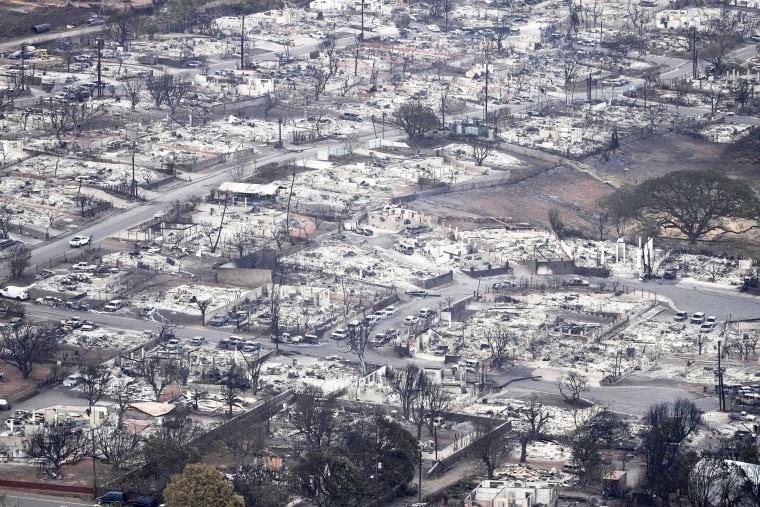MAALAEA HARBOR, Hawaii — The wind-fueled wildfire that swept into Lahaina, the deadliest wildfire in the U.S. in modern history, “looked like Armageddon,” Maui firefighter Aina Kohler said.
“Everything happened so fast,” she said. “The winds were the highest I’ve ever felt on Maui, in my life or anywhere in my life. And everything just happened so fast.”
Part of what went wrong in the fire that erupted Tuesday and devastated Lahaina, a town of around 12,000 in West Maui, was a lack of a crucial resource: water.
“We ran out of water,” she said in an interview Monday. “We’re on an island, with a limited supply. And that’s what we all talk about all the time, our limited resources.”

Kohler and her husband, Jonny Varona, who is also a firefighter, lived in Lahaina, and their home was among the thousands lost in the fire.
Kohler was on duty that day and worked the Lahaina fire, while Varona was home with their children.
“Everything that could go, that came into play, that could possibly limit our resources, our help, our town, happened,” Kohler said. “And there was some stuff — a lot of stuff — that was out of our control.”
Varona, at home with the children, could tell the fire was serious.
“I saw the smoke and knew it wasn’t good — the colors and the popping that was coming from it were explosions,” Varona said. “I knew it was structures, so I knew to take my kids and get out of there.”
Varona went to the fire station to see whether someone could take his kids so he could help, too. “Everybody was out. Everybody was gone,” he said.
Kohler said that as firefighters fought the Lahaina fire that day, her thoughts centered on: “Where can we stop it? Where can we cut it off?”
“With high winds like that, you want to predict — OK, we can stop it here, let’s make a stance here. That’s what everybody was thinking,” she said.
Information about what was on fire was coming so fast, Kohler said. Winds gusted at over 60 mph, officials have said.
Kohler said she witnessed “people running for their lives, people being carried out, people being rescued, people getting stuck. Power lines were already down before the fire.”
The fire in Lahaina struck at the worst possible time, Kohler said. Half of resources were on the other side of the island fighting another wildfire, the Kula fire, she said.
Kohler said the wind was a major factor. High winds struck the island as Hurricane Dora, a Category 4 storm, passed south of Hawaii, officials said.
The fact that water pressure was low might be explained by the fire’s having destroyed so many homes, causing the system to be opened up, Varona said, although he said he did not know the cause.
“I want to be mad at something,” Kohler said. But she stopped herself.
“Focus on the positive is what I need to do."
